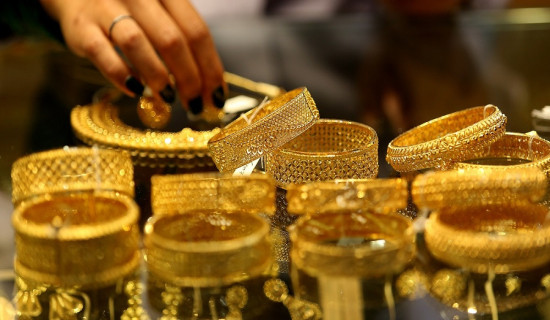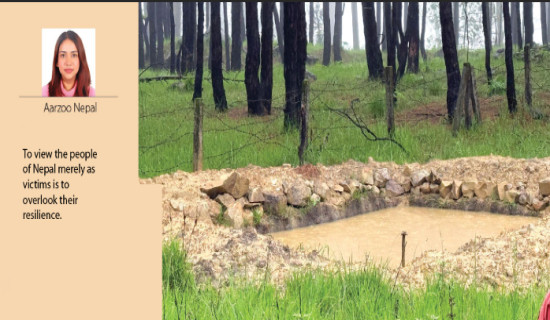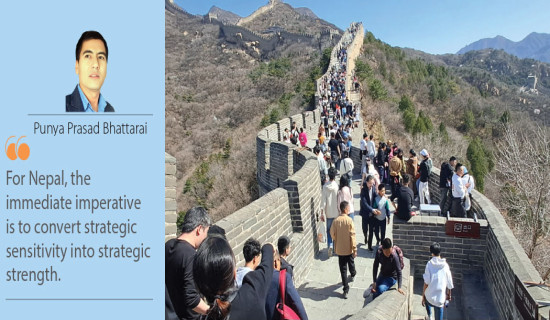- Saturday, 6 December 2025
Electricity consumption increases by threefold
By A Staff Reporter,Kathmandu, Aug. 26: Electricity consumption has increased by threefold after the end of load shedding in the country and regular supply of electricity.
According to the Nepal Electricity Authority, annual electricity consumption reached 10.02 billion units in last fiscal year 2023/24 from 3.72 billion units in the fiscal year 2015/16.
In the period of eight years, electricity consumption in the country has increased by 6.51 billion units. Eight years ago, the growth rate of electricity consumption was negative.
Last fiscal year, about 4.31 billion units of electricity was consumed by household consumers and 3.69 billion units by industrial customers. The rest of the electricity was consumed by customers of other groups.
In the meantime, the per capita energy consumption reached 400 units by last year, which was 131 units eight years ago.
Eight years ago, even during the rainy season, there was eight hours of load shedding every day. It was predicted that load shedding would be obligatory for 14 hours a day in winter season. From October 2016, the load shedding of the consumer side of the major cities of the country and then of the industrial customers was ended successively through the Kathmandu valley.
The entire country was declared free from load shedding from April 2022.
Eight years ago, only 58 per cent of households had access to electricity. Now electricity has reached 99 per cent of the population.
About 97 per cent of the households have access to electricity from the national grid and 2 per cent from off-grid small hydropower, and solar energy plants.
The number of electricity customers was around 3 million in 2072/73 BS, but now it has reached 5.93 million including community ones.
Managing Director of Nepal Electricity Authority Kul Man Ghising said that after the end of load shedding, electricity consumption had increased since the sufficient continuous power supply started.
"Large and small industries are receiving continuous electricity supply. During this period, the additional electricity loads of industries have been approved. The use of electrical appliances for household purposes, including cooking, has increased and the use of electric vehicles in private and public transport is increasing. Electrification has been done extensively, due to which domestic consumption of electricity is increasing, said Ghising.
With the increase in electricity demand every year, challenges have been added to electricity supply, he said.
After solving such challenges and problems, the main cities of the country with reliable, quality and safe electricity supply to consumers have been divided into 11 clusters and a master plan of transmission and distribution structure that can supply the demand until 2050 has been prepared and gradually being implemented, he said.
He said that work is being done to increase the consumption of electricity internally, reduce imports by increasing production and increase exports.
Electricity consumption, which was 3.72 billion units in the year 2015/16, increased by 28.47 per centage points to 4.77 billion units in the year 2016/17.
Electricity consumption in 2017/18 was 5.56 billion units, 6.3 billion units in 2018/19, 6.42 billion units in 2019/20, and 7.28 billion units in 2020/21.
Similarly, in 2021/22, 8.84 billion units of electricity was consumed, in 2022/23, 9.35 billion units and in 2023/24, 10.2 billion units of electricity was consumed.
The electricity consumption has increased by about 10 per cent in the year 2023/24 as compared to fiscal year 2022/23.
In the last year 2023/24, the peak demand (time of high demand for electricity) increased by 11.34 per cent compared to the previous year 2022/23.
The highest demand for electricity in the country was recorded on May 30, 2023. On that day, the peak demand reached 2,212 megawatts.
Although electricity is exported to India for six months of the rainy season, in winter, electricity production of the river-flowing hydropower projects decreases, and electricity has to be imported to meet domestic demand for a few months.
However, the amount of energy imported into the system is decreasing. Last year, the share of imported energy in the system was 14.68 per cent that is 8.57 percentage points less than the previous year.
The electricity export increased by 44 per cent in the fiscal year.
Last year, about 1.9 billion units of electricity worth Rs. 16.93 billion was imported from India. But during this period, about 1.95 billion units of electricity worth Rs. 17.06 billion was exported to India. Nepal became a net exporter of electricity from being a net importer of electricity by exporting more than Rs. 130 million more than imports.
















